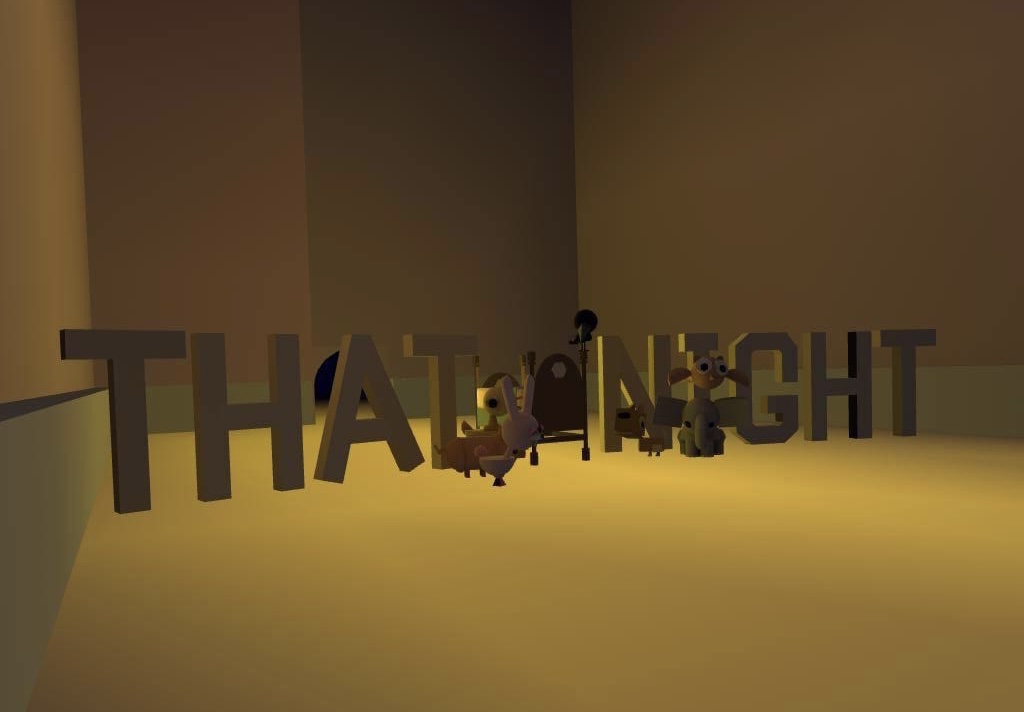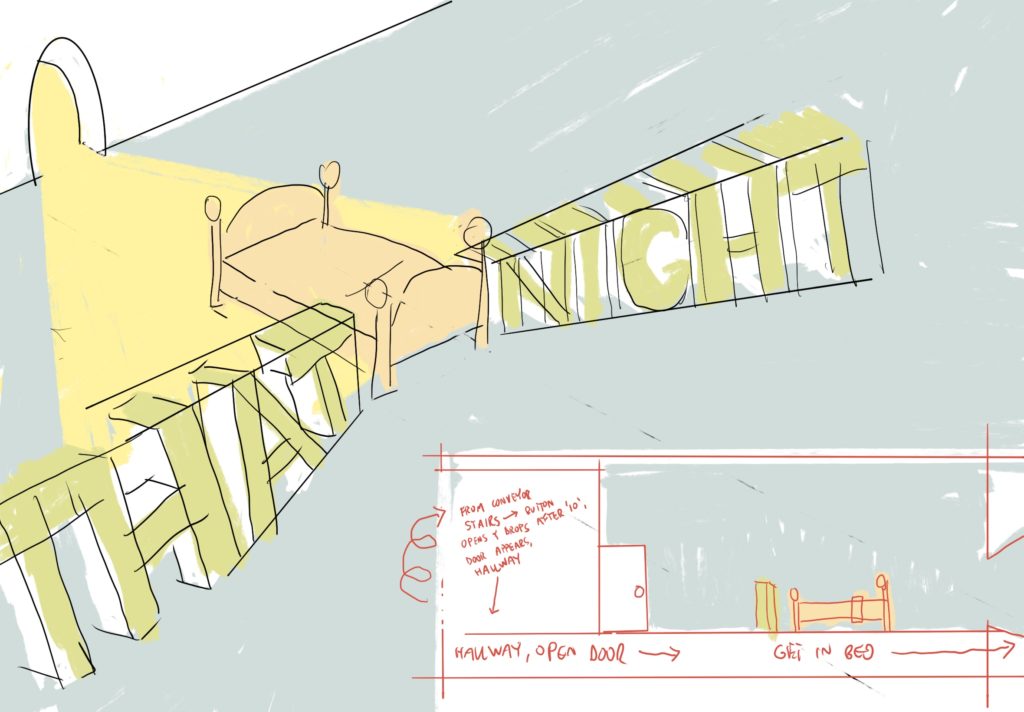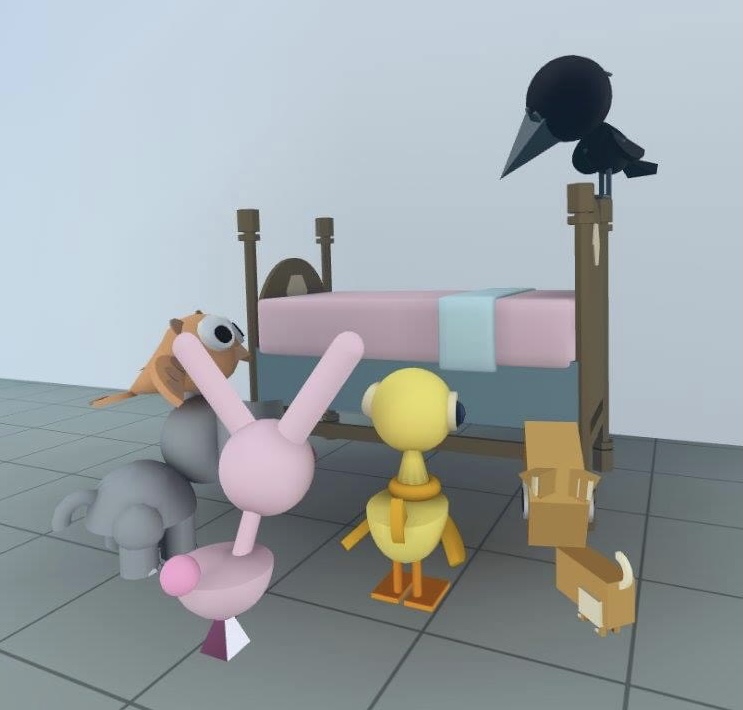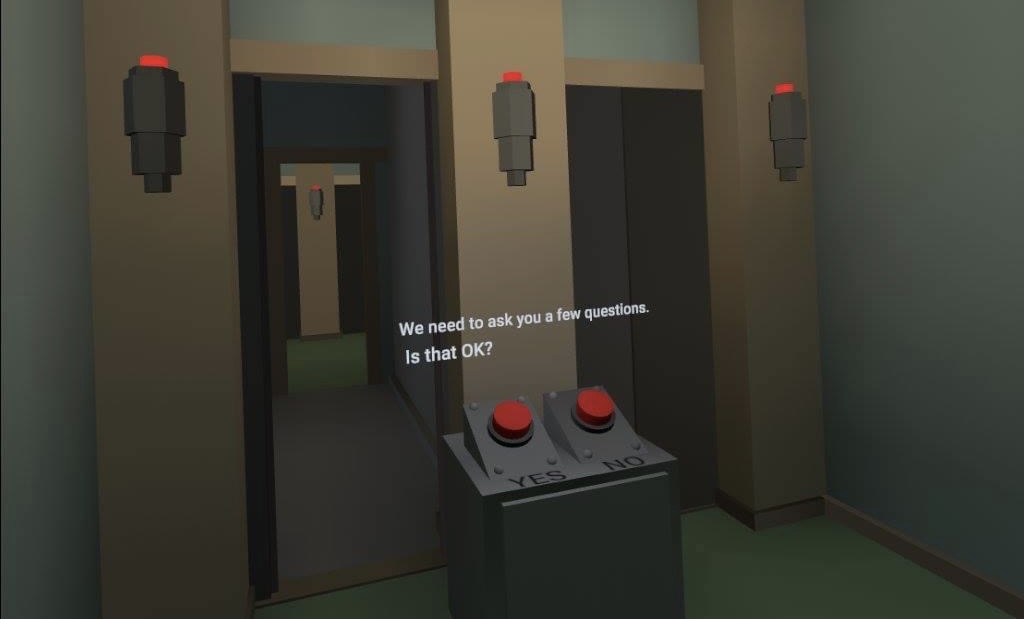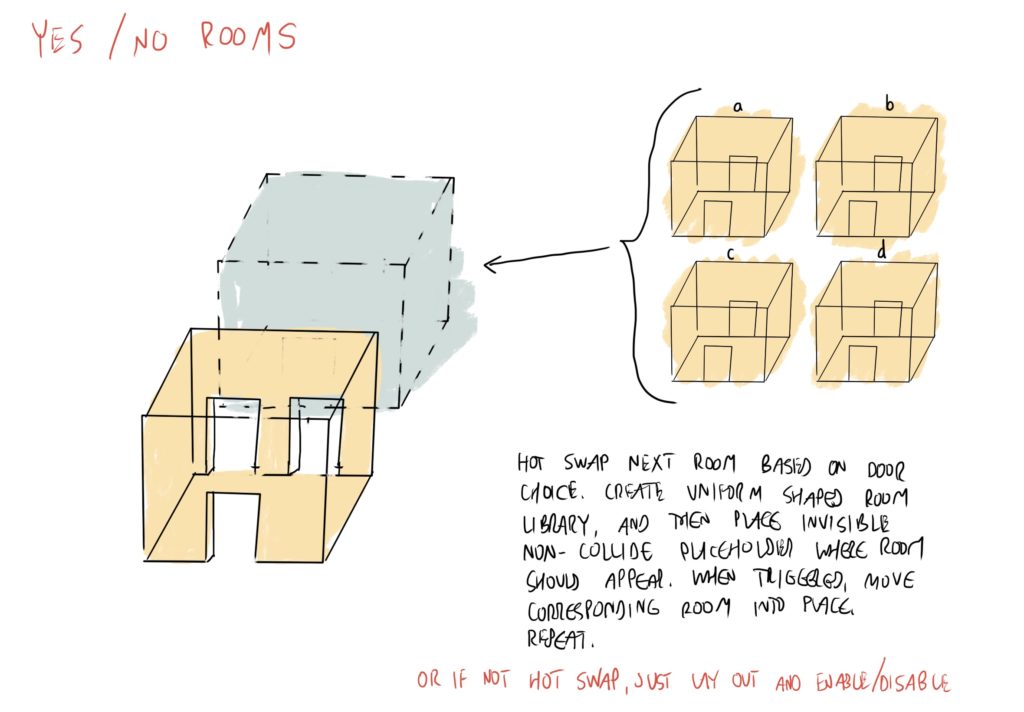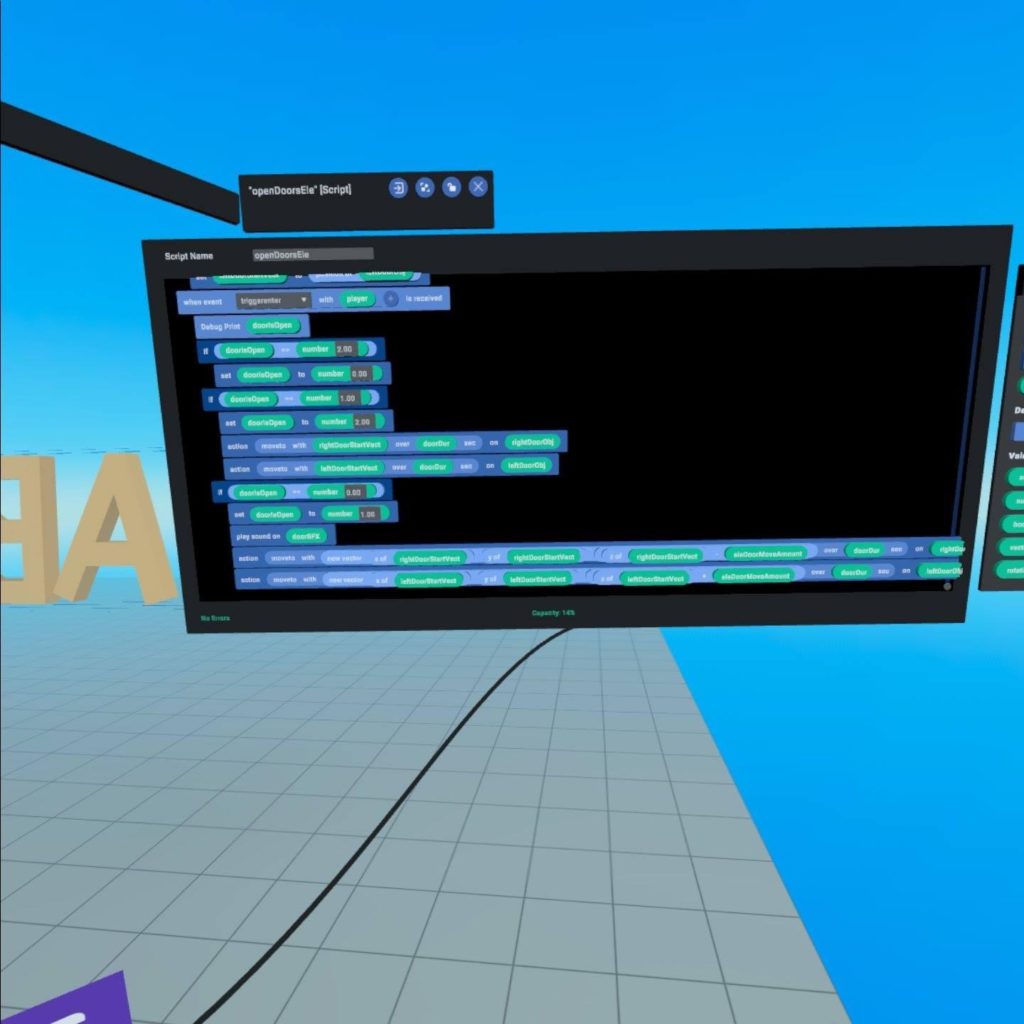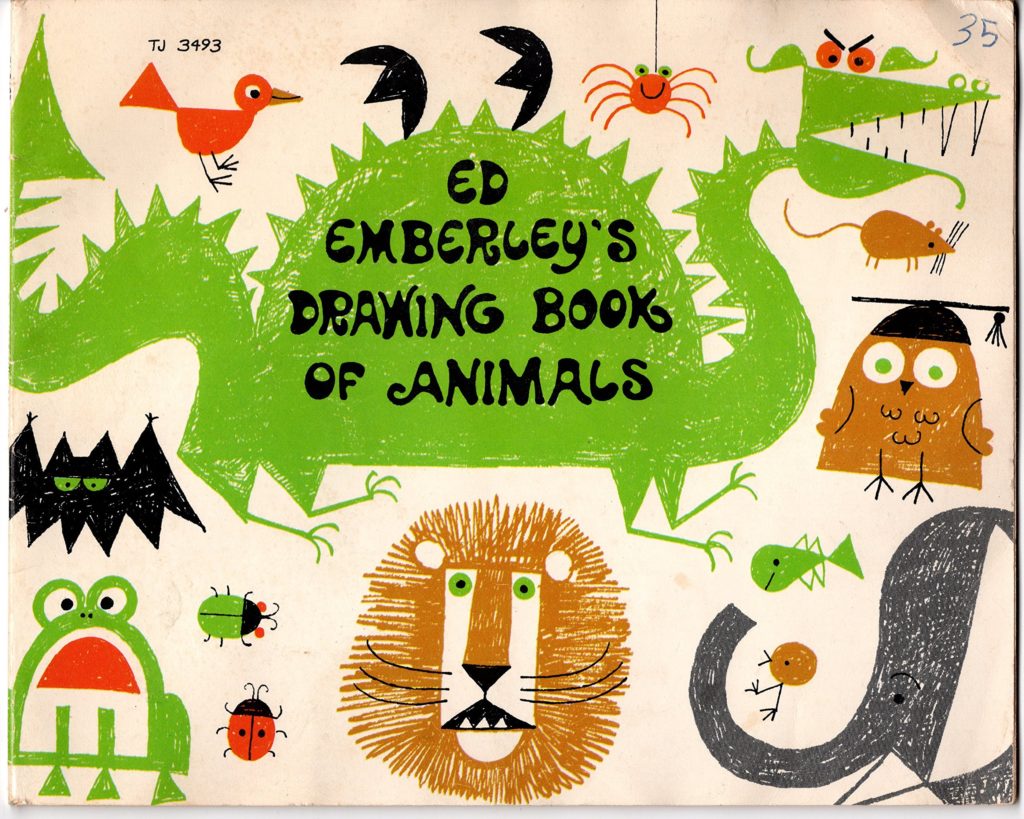
One of the things I’ve been missing while creating in Horizon is the ability to hinge / joint two or more objects together. I’ve definitely missed this when trying to animate characters, but I’m also missing the ability to create objects like ropes or hanging elements like a swinging lantern.
And then I thought, well, we have items with physics, can I simply make a hook out of several simple cubes, group them with an object I’d like to hook onto something, and set the grouped object to interactable > physics? I did a quick test, and it worked! And the resulting animation was smoother and more reactive than I’d expected!
I’m excited to really start playing with this in my worlds, I see so many possibilities: ropes, swinging signs, applying force to an object to cause it to swing in response to external stimulus, a swinging door that will open when you push past it…
Note: this isn’t the greatest video… I was going to record a new, less shaky video tonight but I’m currently locked out of my worlds in Horizon. I’ll update the video when Horizon returns from the dead 🙂
